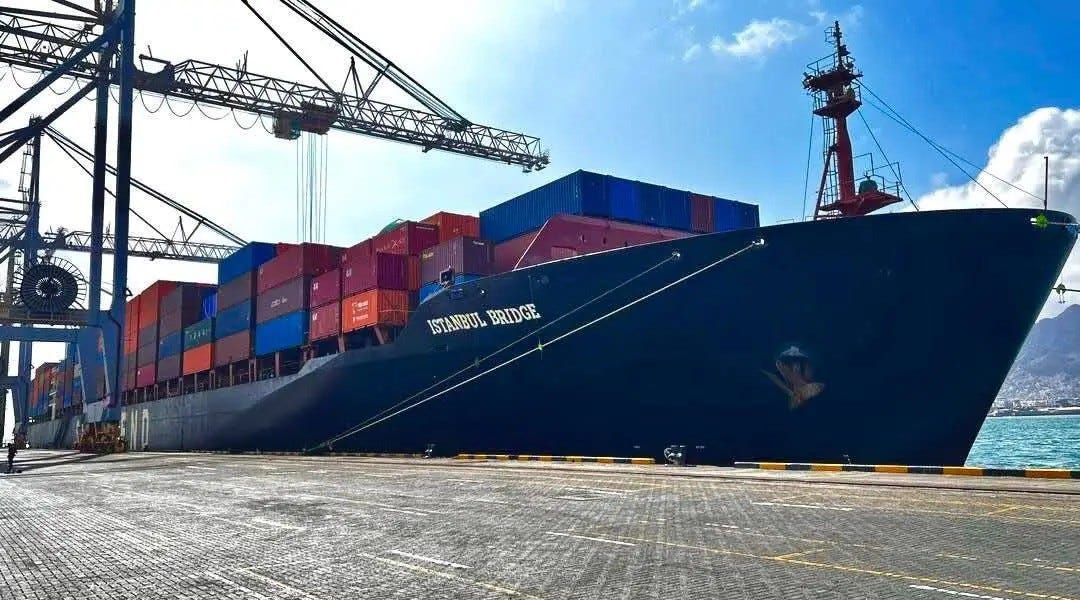Chinese Cargo Vessel Sails Through Top of the World
China's Arctic Express: A Game-Changer for Trade

In a groundbreaking development, the Chinese-owned container ship Istanbul Bridge has completed one of the fastest recorded transits through Arctic waters, traversing the Russian Northern Sea Route in just six days. This achievement sets the stage for the inaugural voyage of the “Arctic Express,” a new cargo shipping route that promises to significantly reduce shipping times between Europe and Asia. Scheduled to launch on September 20, the service aims to connect major Chinese ports with European destinations, potentially reshaping global trade dynamics.
Revolutionizing Shipping Routes
The Istanbul Bridge, a Panamax-sized vessel measuring 294 meters in length, is set to operate as the first full-time ship for the Arctic Express service. This new route will link the Chinese ports of Ningbo-Zhoushan, Qingdao, and Shanghai with European ports in Felixstowe, Rotterdam, and Hamburg. The vessel’s operators, Haijie Shipping Company, anticipate that the first voyage will take approximately 18 days, a remarkable feat considering the hazardous icy waters it will navigate.
What makes this shipping route particularly noteworthy is the vessel’s ability to maintain a cruising speed of 15 to 18 knots without the assistance of Russian icebreakers. While this speed may be categorized as “slow cruising” in maritime terms, it is comparable to the average speeds of similar-sized vessels in open waters. The Istanbul Bridge recently achieved a top speed of 18.4 knots during its latest transit, showcasing its capability to handle the challenging Arctic conditions.
The implications of the Arctic Express are significant for China’s trade relations with Europe. As global warming continues to reduce ice coverage in the Arctic, the Northern Sea Route is becoming increasingly navigable. This new shipping lane could provide China with a strategic advantage, allowing it to bypass traditional maritime chokepoints like the Straits of Malacca, which are critical for its trade routes. The Arctic Express could potentially enable China to send multiple shipments to Europe during peak demand seasons, enhancing its competitive edge in global markets.
Strategic Implications and Future Prospects
The establishment of the Arctic Express not only benefits China but also has broader implications for global trade and geopolitics. With the Arctic expected to experience ice-free summers by 2030, the feasibility of shipping routes through this region is set to increase. This shift could lead to more efficient logistics for European retailers, particularly during the crucial months leading up to the holiday season when demand for goods surges.
Currently, shipping times between Asia and Europe can take up to 60 days, exacerbated by disruptions in traditional routes. The Arctic Express could cut this time significantly, allowing for quicker deliveries and reduced congestion at major ports. Smaller vessels like the Istanbul Bridge can access less congested ports, further streamlining the shipping process.
Turkish Istanbul Shipyard Achieves Breakthrough in Submarine Construction
Moreover, the Arctic Express aligns with Russia’s increasing reliance on Chinese trade amid ongoing Western sanctions. As Russia seeks to bolster its economy, the new shipping route offers a vital link to European markets, enhancing trade opportunities for both nations. Should the Arctic Express prove successful, it could solidify a long-term partnership between China and Russia, reshaping the landscape of international trade.
In conclusion, the launch of the Arctic Express represents a significant shift in global shipping dynamics. By leveraging the advantages of the Northern Sea Route, China is poised to enhance its trade capabilities while challenging traditional maritime strategies employed by the United States. As the Arctic continues to open up, the implications for global trade and geopolitical relations will be profound.
